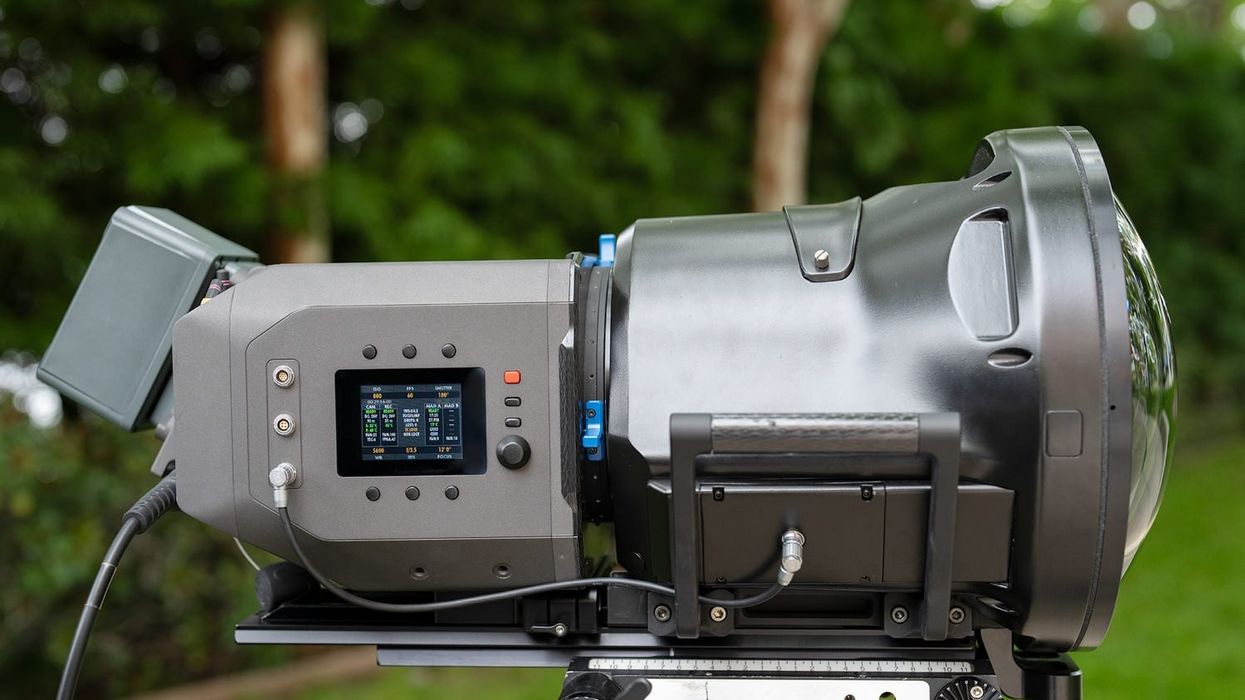How Darren Aronofsky Shot His 18K Sphere Film With a 12-Person Camera Crew
Shooting 18K resolution film at 60 fps is nothing short of a technical marvel. Here’s how Aronofsky (and his 12-person camera crew) pulled it off.

A look at the Big Sky 18K camera
For anyone who’s been to Las Vegas in the past few months, or simply been online to see images and videos shared across social media, can tell you—the new Sphere arena is a sight to behold. Perhaps now fittingly referred to as one of the newest wonders of the world, the giant state-of-the-art LED screen features a 160,000 square-foot display that features a resolution over 80 times that of a normal high-definition television.
But, as Darren Aronofsky recently discovered when he had the chance to create his new movie Postcard From Earth which is now screening at the Sphere, shooting footage for this insane new format is quite challenging, to say the least.
Let’s take a look at how Aronofsky was able to use an 18K camera, which reportedly takes up to 12 people to operate, to shoot his film for this gigantic format.
Shooting Postcard From Earth
In what sounds like a very loose 50-minute film about the history of life on Earth, Aronofsky’s Postcard From Earth short film certainly promises to be every bit as ambitious as its technical challenges. Following the birth of human civilizations and exploring the diverse wonders of the world, Arronofsky’s Postcard even ventures to glimpse into the future when humanity departs Earth to settle other worlds.
But, back here on Earth and in the here and now, this new film from Aronofsky feels about as futuristic as they come. There are tons of technical challenges that come from creating content for this giant screen format. Not only does the screen reach up to 366 feet tall (which is between 30 to 35 stories depending on how you measure it), but it is also a curving 270-degree screen that covers the size of about four football fields.
On top of that, Aronofsky needed to shoot for an 18K resolution at an incredibly fast 60 frames per second to give audiences in the sphere the best experience possible.
To do that, Aronofsky needed one hell of a camera.

The camera used for Postcards From Earth
Credit: Sphere Studios
The Big Sky 18K Camera
Dubbed the “Big Sky”, the camera Aronofsky chose to go with featured a 3160-megapixel HDR image sensor which was three by three inches in size. When compared to your normal 4K camera, this represents a 40x resolution increase. The Big Sky is also reportedly capable of capturing 10-bit footage at up to 120 frames per second in the 18K square format, or 60p at 12-bit.
The Big Sky camera also features an “18K x 18K” (18K Square Format) custom image sensor which, when combined with the Big Sky’s single-lens system, can reach the optical requirements for matching the Sphere’s 16K x 16K edge-to-edge immersive display plane.
For this project, PetaPixel reports that two primary lenses were designed and used including a 150-degree field of view lens which would be true to the view of the sphere, and a 165-degree field of view lens for shooting when the camera was in rapid motion on a helicopter.
Operating the Big Sky Camera
What’s really fascinating though about the Big Sky camera and its 18K resolution recording might simply be how hard it was to use. In a recent interview on Late Night with Seth Meyers, Aronofsky revealed that it took up to a dozen crew members to simply operate the camera and that numerous issues had to be solved when simply trying to move it or keep it from overheating.
“It was great. It was what we were hoping for. So, no one had ever seen it, so we didn’t really know what they would respond. And then this moment happened. I actually didn’t know that jaw-dropping was a real thing. You hear that word, but it’s fun to look around, and people are just like, their jaws are literally dropped, and they’re all pointing at different places on the screen. So it’s a joy to have audiences go along for that trip.” — Aronofsky on Late Night.
Hopefully, the technical challenges didn’t appear too daunting to others and the Big Sky might be usable again in the future. Whether Aronofsky decides to make another film for the Sphere might be up to him, but it’s exciting to see technology push forward in such bold and fascinating ways.











